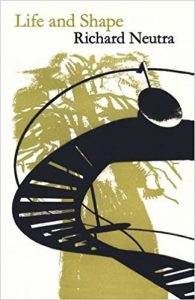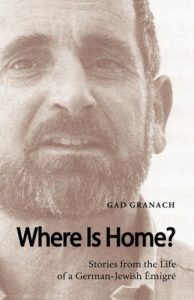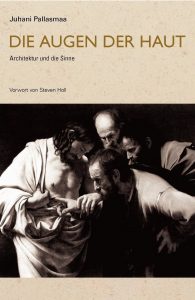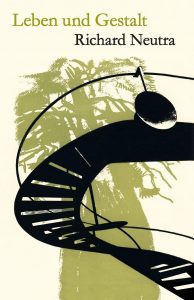
Life and Shape: The Autobiography of Richard Neutra
by Richard Neutra
In print again for the first time since 1962, the autobiography of this legendary architect provides insights into the life of one of modernism’s most influential architects. With a new foreword by Dion Neutra.
Since he followed it all of his life, Richard Neutra (1892–1970) must have relished the maxim of the Greek philosopher Socrates: ‘The unexamined life is not worth living.’ In his books, articles, lectures, correspondence, and even casual conversations, Neutra constantly examined, not only his own life, but the lives of others – present and past – and the human and natural world they inhabited. Nowhere was this truer than in his autobiography Life and Shape first published in 1962, which now, after years of being out of print, has again happily come back to life.
As opposed to Survival Through Design (1954), his superb collection of densely philosophical essays, Neutra took a different tack in Life and Shape, following a lighter and more deliberately relaxed approach. It was as if the usually serious and intense Neutra was giving himself permission to reveal his richly ironic sense of humor and to probe areas in his personal experience which he had not examined as closely before. These included hitherto unrecorded memories of his parents, siblings, and his childhood and education in imperial Vienna, his numbing experiences as an Austrian artillery officer in World War I, and the beginnings of his architectural consciousness in his response to the work of Otto Wagner, Adolf Loos, Erich Mendelsohn, Louis Sullivan, and Frank Lloyd Wright.
As in the autobiographies of Sullivan and Wright, Life and Shape concentrates on Neutra’s earlier years, both in Europe and America. While he naturally recounts his memories of such well-known commissions as the Lovell Health House (1929), his own Van der Leeuw Research House (1933) and the von Sternberg House (1935), he also muses on such less famous buildings as the small, and now virtually forgotten, Mosk House (1933). Life and Shape also confirms Neutra’s obsession with the passage of time and his firm resolution never to waste it.
Like Sullivan and Wright, Neutra eschewed writing a factual chronicle, and – at the age of 70 – composed instead a meditation on the aspects of his life and work that seemed, in retrospect, to be the most interesting and significant. He felt no need to try to “include everything” but rather to present an honest recounting of his memory of his life. In writing my own Richard Neutra and the Search for Modern Architecture [Oxford University Press, 1982; Rizzoli Press, 2006], I relied on Life and Shape when I wanted an account of Neutra’s experiences told in his own authentic voice. For future generations of architects, historians, and readers, it is good to have it back.
UCLA Professor Emeritus of History and Architecture, author
of “Richard Neutra and the Search for Modern Architecture”

Where Is Home? Stories from the Life of a German-Jewish Émigré
by Gad Granach
“Did you come here out of personal conviction or are you from Germany?” was a question asked of German Jews when they arrived in Palestine in 1933. Few came out of conviction. The majority of the sixty thousand German Jews who arrived in the then-British mandate came because they had no other option. Palestine was not the land of their dreams, but rather a place of asylum where one would have to start life anew. Doctors became bus drivers, lawyers raised chickens, and artists worked as waiters. For the young, however, immigration to Palestine was a great adventure, the beginning of a new life free from old conventions and, sometimes, the beginning as well of a life or death battle.
Gad Granach still went by Gerhard when he arrived at Haifa Harbor at the age of twenty-one. The son of a famous actor in Berlin and of a politically engaged mother, he was not one of those who came out of conviction. He made the best of it, whether working as a reserve policeman for the British, a construction worker in Tel Aviv, or a locomotive driver along the Dead Sea. He encountered a land of neither milk nor honey, and took part in five major wars and a number of smaller ones, wishing all the while that God would ‘choose’ another people and leave the Jews in peace.

There Goes a Mensch
by Alexander Granach
Alexander Granach was born in 1890 in Werbowitz, a Jewish shtetl then on the easternmost rim of the Austro-Hungarian Empire, and became one of the most successful actors of both the stage and early cinema during the Weimar Republic. Granach, urged by Berthold Brecht, penned his early life memoirs while under wartime curfew for German emigres in Hollywood. He recounts the shtetl life of his childhood, to his ascent onto the stages of Vienna and Berlin, and in between his time in the First World War and as aprisoner of war. Granach entered into the renown Max Reinhardt Acting School in Berlin, and appeared in milestones of early German cinema such as Nosferatu and Erdgeist. The heady currents of the Weimar era saw him moving in circles with Thomas Mann, F.W. Murnau, Herman Hesse in the cultural and artistic epicenter of the time, politically engaged, before the rise of Nazism would plunge Europe into destruction. In the era of expressionist actors, Granach was the “most expressionistic” Lion Feuchtwanger wrote, and with a breadth and depth to his dramatic, chameleonic abilities matched in reflection only by his profoundly empathetic and humanist strain as a mensch. The memoir, long out of print in English, retains a historical place in German-Jewish studies not only for the actor’s chronicle, but also for the era through which he lived, survived, and thrived.
Alexander Granach won critical acclaim for his performances in such well-known American films as Joan of Paris, Ninotchka with Greta Garbo, For Whom the Bell Tolls, Voice in the Wind, and his last film appearance in The Seventh Cross (1944) with Spencer Tracy.

South Croxted
by Martin Richardson
A childhood memoir of South London during the swinging 1960s and 1970s, miniskirts and the Beatles, where life was anything but normal. From villains and bent coppers to gunrunning in Africa and imprisonment, all brought to a focus by an IRA terrorist assassination plot that punctuated the end of an era. This is the story of small-time scoundrel, Victor Richardson, a character larger than life but smaller than human, seen through the eyes of his son, Martin, who pieces together fragments from the past to present an insightful picture of gangland London at its height, painting an autobiographical account of his father’s ill-fated life.

Three-Dimensional Imaging Techniques
by Takanori Okoshi
A seminal early text on lenticular and holographic imaging, Takanori Okoshi’s Three-Dimensional Imaging Techniques provides analysis and insights into the fundamentals of 3-D perception and the creation of 3-D imagery as well as a history of its technological development.

Die Augen der Haut: Architektur und die Sinne
von Juhani Pallasmaa
Architektur kann inspirierend und einnehmend sein, sie kann sogar im Sinne Goethes »das Leben steigern«. Wie kommt es aber, dass architektonische Entwürfe am Zeichentisch oder am Computer-Bildschirm zwar meist recht gut aussehen, in der gebauten Realität jedoch oft enttäuschen?
Die Antwort hierfür, behauptet Juhani Pallasmaa, findet sich in der Vorherrschaft des Visuellen, die alle Bereiche von Technologie- und Konsumkultur umfasst und so auch in die Architekturpraxis und -lehre Einzug gehalten hat. Während unsere Erfahrung der Welt auf der Kombination aller fünf Sinne beruht, berücksichtigt die Mehrheit der heute realisierten Architektur gerade mal einen – den Sehsinn. Die Unterdrückung der anderen Erfahrungsbereiche hat unsere Umwelt sinnlich verarmen lassen und ruft Gefühle von Distanz und Entfremdung hervor.
Erstmalig 1996 (in englischer Sprache) veröffentlicht, ist Die Augen der Haut inzwischen zu einem Klassiker der Architekturtheorie geworden, der weltweit zur Pflichtlektüre an den Architekturhochschulen gehört. Das Buch besteht aus zwei Essays. Der erste gibt einen Überblick über die Entwicklung des okularzentrischen Paradigmas in der westlichen Kultur seit der griechischen Antike sowie über dessen Einfluss auf unsere Welterfahrung und die Eigenschaften der Architektur. Der zweite Essay untersucht, welche Rolle die übrigen Sinne bei authentischen Architekturerfahrungen spielen, und weist einen Weg in Richtung einer multisensorischen Architektur, welche ein Gefühl von Zugehörigkeit und Integration ermöglicht.
Seit der Erstveröffentlichung des Buchs hat die Rolle des Körpers und der Sinne ein gesteigertes Interesse in der Architekturphilosophie und Architekturlehre erfahren. Die neue, überarbeitete und ergänzte Ausgabe dieses wegweisenden Werks wird nicht nur Architekten und Studenten dazu anregen, eine ganzheitlichere Architektur zu entwerfen, sondern auch die Wahrnehmung des interessierten Laien bereichern.

Leben und Gestalt: Die Autobiografie von Richard Neutra
von Ricahrd Neutra
Richard Neutra (1892–1970) muss die Maxime des griechischen Philosophen Sokrates geschätzt haben, die besagte: »Das ungeprüfte Leben ist nicht lebenswert«. Denn er hat sie lebenslang befolgt. In seinen Büchern, Artikeln, Vorträgen, seiner Korrespondenz und selbst im beiläufigen Gespräch prüfte Neutra immerfort nicht nur sein eigenes Leben, sondern auch jenes anderer – historischer und zeitgenössischer – Menschen und die vom Menschen gestaltete und natürliche Welt, die sie bewohnten. Dies wurde nirgends deutlicher als in seiner Autobiografie Leben und Gestalt, die 1962 (unter dem Titel Auftrag für morgen) veröffentlicht wurde und heute, nachdem sie viele Jahre lang vergriffen war, glücklicherweise zu neuem Leben erwacht ist.
Im Gegensatz zu Wenn wir weiterleben wollen (1954), seiner exzellenten Sammlung dichter philosophischer Essays, verlieh Neutra seiner Autobiografie einen leichteren und entspannteren Duktus. Es scheint, als ob der üblicherweise ernsthafte und konzentrierte Neutra es sich hier erlaubte, seinen reichen Sinn für Ironie und Humor zu offenbaren und Teile seines persönlichen Erfahrungsschatzes zu sondieren, mit denen er sich zuvor noch nicht in dieser Tiefe befasst hatte. Dazu gehörten bislang unveröffentlichte Erinnerungen an seine Eltern, Geschwister und seine Kindheit im Wien der Kaiserzeit, seine abstumpfenden Erfahrungen als österreichischer Artillerieoffizier im Ersten Weltkrieg und die Anfänge seines architektonischen Bewusstseins in der Reaktion auf die Werke von Otto Wagner, Adolf Loos, Erich Mendelsohn, Louis Sullivan und Frank Lloyd Wright.
Ebenso wie die Autobiografien von Sullivan und Wright konzentriert sich auch Leben und Gestalt auf Neutras frühe Jahre sowohl in Europa als auch in Amerika. Während er selbstverständlich seine Erinnerungen an so bekannte Aufträge wie das Lovell Health House (1929), sein eigenes Van der Leeuw Research House (1933) und das von Sternberg House (1935) wiedergibt, sinniert er auch über weniger bekannte Gebäude wie das kleine und heute so gut wie vergessene Mosk House (1933). In Leben und Gestalt zeigt sich auch Neutras Obsession mit der Vergänglichkeit der Zeit und seine feste Entschlossenheit, sie nie zu vergeuden.
Wie Sullivan und Wright vermied es auch Neutra, eine reine Tatsachenchronik zu verfassen und konzipierte sein Buch – im Alter von 70 Jahren – stattdessen als Meditation über die Aspekte seines Lebens und Werks, die ihm am interessantesten und wichtigsten schienen. Er verspürte kein Bedürfnis, »alles mit einzuschließen«, sondern strebte vielmehr eine ehrliche Wiedergabe seiner Erinnerung an sein eigenes Leben an. Beim Verfassen meines eigenen Buchs Richard Neutra and the Search for Modern Architecture (Oxford University Press 1982; Rizzoli Press 2006) habe ich mich immer dann auf Leben und Gestalt gestützt, wenn ich Neutras Erfahrungen in seiner eigenen authentischen Stimme wiedergeben wollte. Für künftige Generationen von Architekten, Historikern und Leser ist es gut, dass sie wieder da ist.
– Thomas S. Hines, Forschungsprofessor für Geschichte und Architektur an der University of California in Los Angeles

Vida y forma: Autobiografía de Richard Neutra
von Richard Neutra
Puesto que la siguió durante toda su vida, Richard Neutra (1892–1970) debía apreciar la máxima de Sócrates, el gran filósofo griego: “una vida sin examen no tiene objeto de vivirla para el hombre”. En sus libros, en sus conferencias, incluso en sus conversaciones informales, Neutra reexaminaba constantemente no solo su propia vida, sino también la vida de los demás –presente y pasada– y el mundo, natural y humano, en que habitaban. En ningún otro lugar se hace esto más patente que en Vida y forma, su autobiografía publicada por primera vez en 1962, y que ahora, tras años de estar descatalogada, ha vuelto felizmente a la vida.
A diferencia de Diseñar para sobrevivir (1954), su magnífica colección de ensayos, profunda y filosófica, Neutra opta por otro enfoque en Vida y forma, y adopta un acercamiento más ligero y desenfadado. Parece como si Neutra, normalmente tan serio y vehemente, se diera aquí permiso para mostrar su irónico sentido del humor y para sondear determinadas áreas de su experiencia personal que nunca antes había examinado tan de cerca. Esto incluye recuerdos hasta ese momento no contados de sus padres y hermanos, de su infancia, y de su educación en la Viena imperial, así como de sus duras experiencias como oficial de la artillería austríaca en la Primera Guerra Mundial y de los inicios de su conciencia arquitectónica en respuesta a las obras de Otto Wagner, Adolf Loos, Erich Mendelsohn, Louis Sullivan y Frank Lloyd Wright.
Al igual que las autobiografías de Sullivan y Wright, Vida y forma se concentra en los primeros años de Neutra, tanto en Europa como en América. Como es natural relata en sus memorias los encargos más conocidos como la Lovell Health House (1929), su propia Van der Leeuw Research House (1933) y la casa Von Sternberg, pero también se detiene en algunas construcciones mucho menos famosas como la pequeña y casi ignorada casa Mosk (1933). Vida y forma también confirma la obsesión de Neutra con el paso del tiempo y su firme resolución de no perderlo nunca.
Como Sullivan y Wright, Neutra evita escribir una crónica de los hechos, para proponer más bien, a sus setenta años, una meditación sobre los aspectos de su vida y su trabajo que retrospectivamente le parecen más interesantes y significantes. En vez de “incluirlo todo”, prefiere presentar un relato honesto de la memoria de su vida. Al escribir mi propio libro Richard Neutra and the Search for Modern Architecture (Oxford University Press, 1982; Rizzoli Press, 2006), me basé en Vida y forma siempre que necesité presentar las experiencias de Neutra con su auténtica voz. Para las generaciones futuras de arquitectos, historiadores y lectores, es una gran noticia tener este libro disponible de nuevo.
– Thomas S. Hines
Profesor emérito de Historia y arquitectura, Universidad de California Los Ángeles




